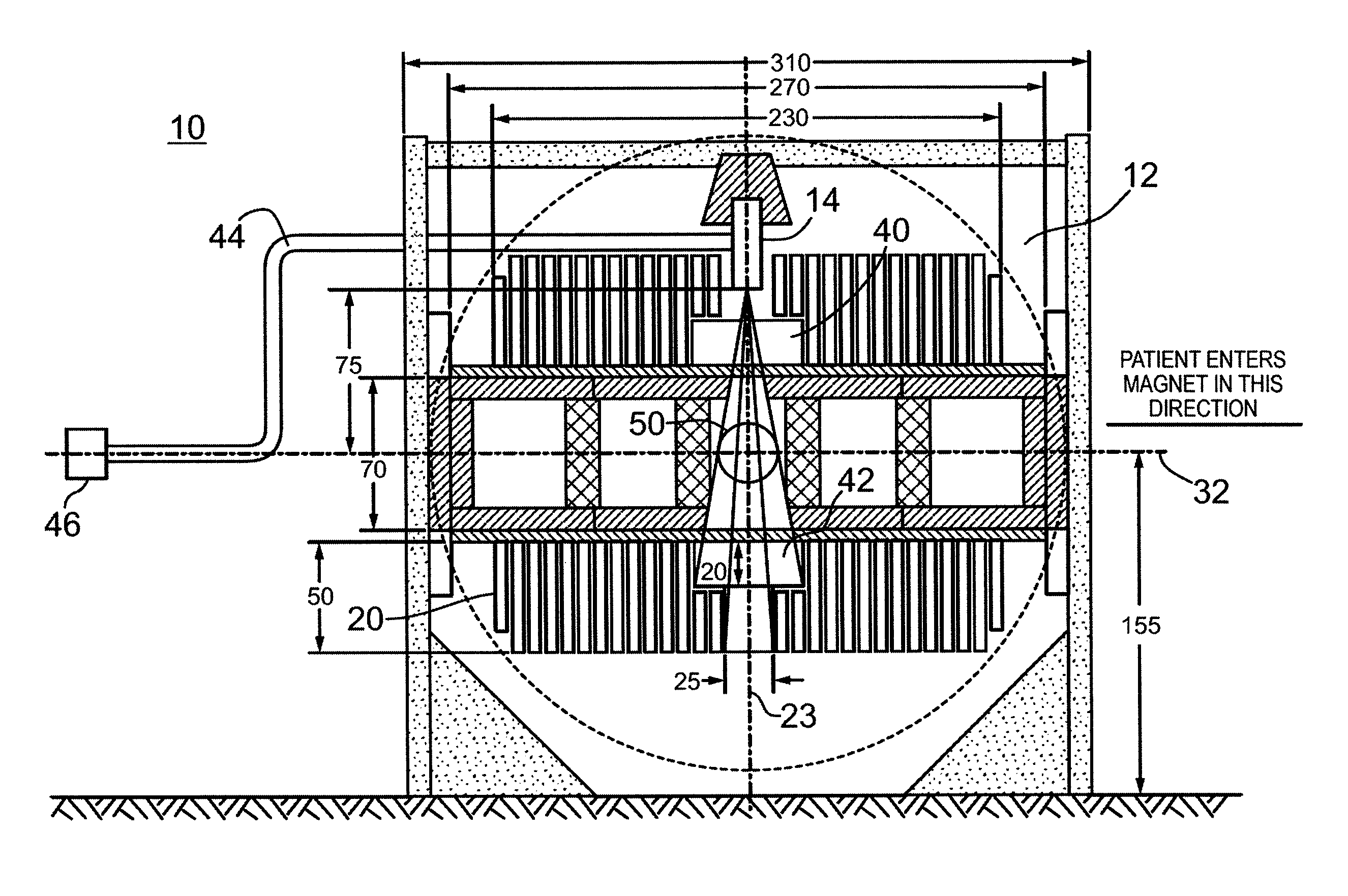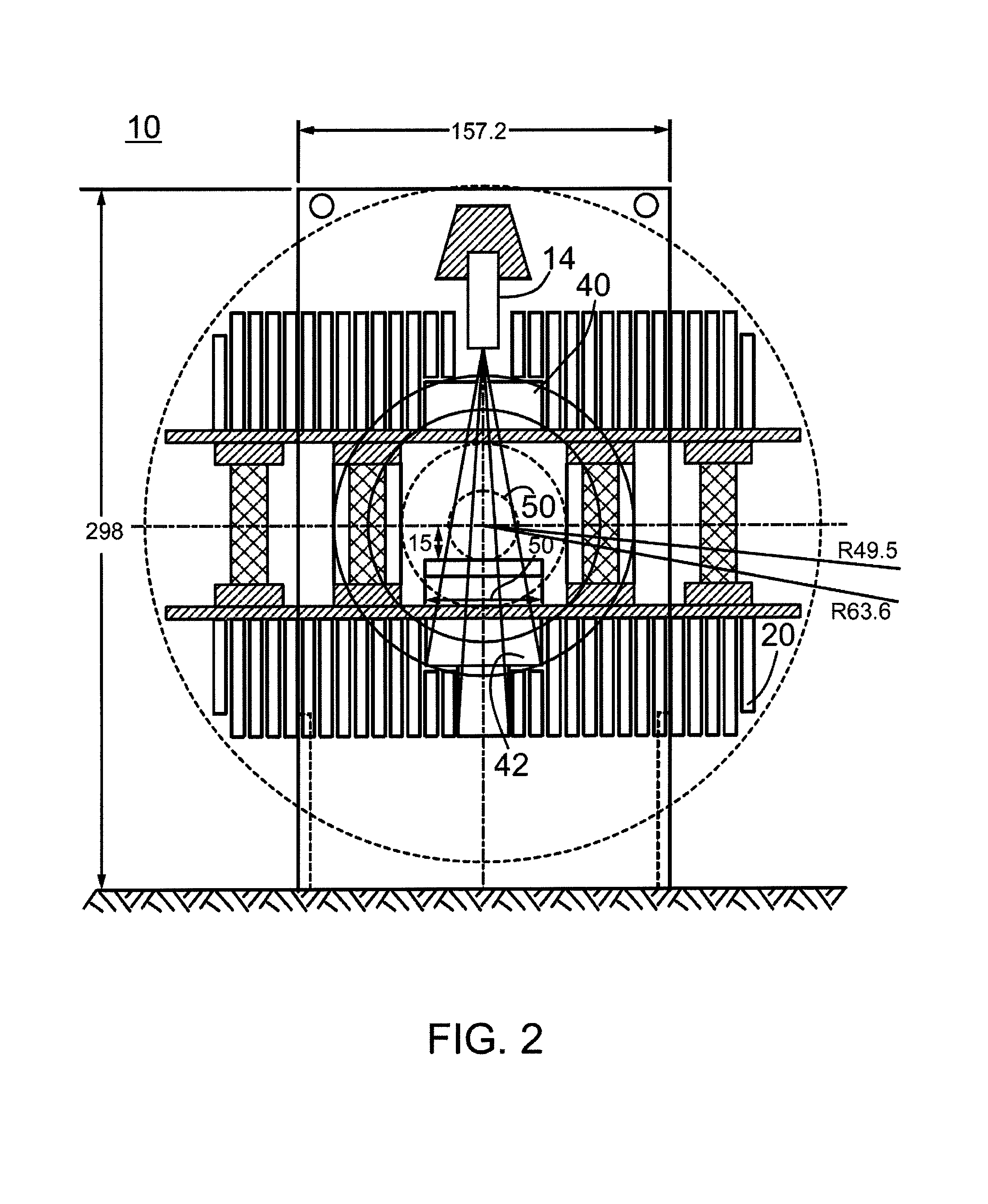Radiation therapy system
a radiation therapy and system technology, applied in the field of radiation therapy, can solve the problems of increasing the risk of normal tissue complications, irradiation of healthy tissue, fiducial markers, etc., and achieve the effects of improving the mri image quality, improving the magnetic field strength, and relatively high magnetic flux density of the mri magnet that can be combined with the linear accelerator
- Summary
- Abstract
- Description
- Claims
- Application Information
AI Technical Summary
Benefits of technology
Problems solved by technology
Method used
Image
Examples
Embodiment Construction
[0053]The present disclosure describes a device which addresses one or more of the problems set out above. In order to reduce the degree to which electrons stray from the central axis of the accelerating waveguide, and to thereby focus electrons on the accelerator's target, a linear accelerator can be immersed in a magnetic field that is parallel to the direction of electron travel in the accelerating waveguide, and advantageously and surprisingly the magnetic field can be provided by the MRI magnet itself.
[0054]FIG. 1 is a side view of a radiation therapy system 10 according to an embodiment, that can fit entirely within a room that is three (3) meters in height. Radiation therapy system 10 comprises an open-bore, 0.2 Tesla MRI assembly 12 integrated with a standard S-band standing wave 6 MV linear accelerator 14. Radiation therapy system 10 is configured to provide a 30 cm diameter imaging volume 50, and comprises two sets of fourteen (14) circular coils 20 of different diameters ...
PUM
 Login to View More
Login to View More Abstract
Description
Claims
Application Information
 Login to View More
Login to View More - R&D
- Intellectual Property
- Life Sciences
- Materials
- Tech Scout
- Unparalleled Data Quality
- Higher Quality Content
- 60% Fewer Hallucinations
Browse by: Latest US Patents, China's latest patents, Technical Efficacy Thesaurus, Application Domain, Technology Topic, Popular Technical Reports.
© 2025 PatSnap. All rights reserved.Legal|Privacy policy|Modern Slavery Act Transparency Statement|Sitemap|About US| Contact US: help@patsnap.com



